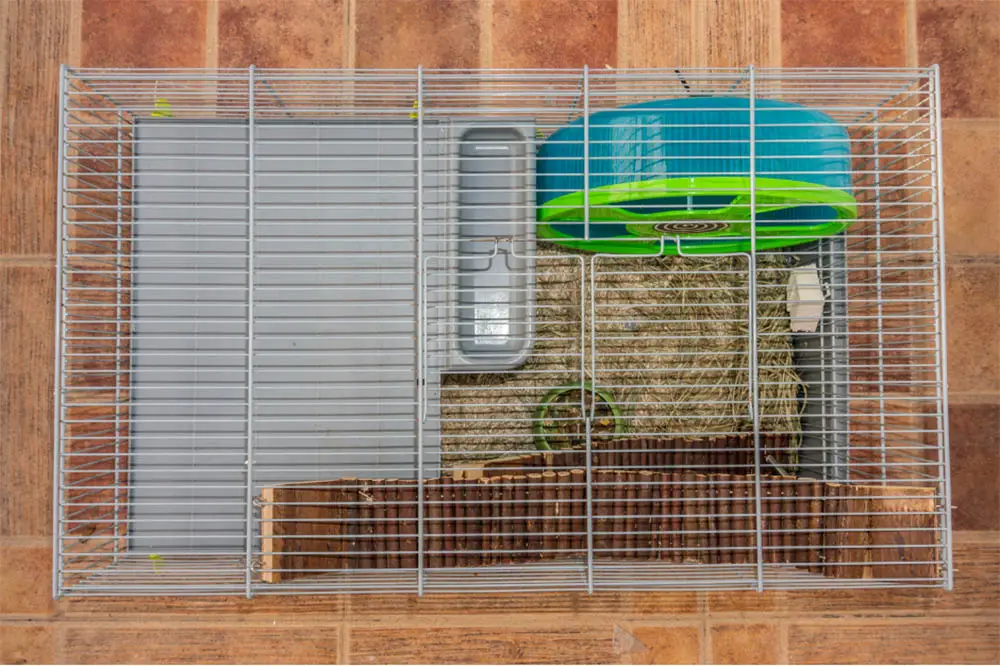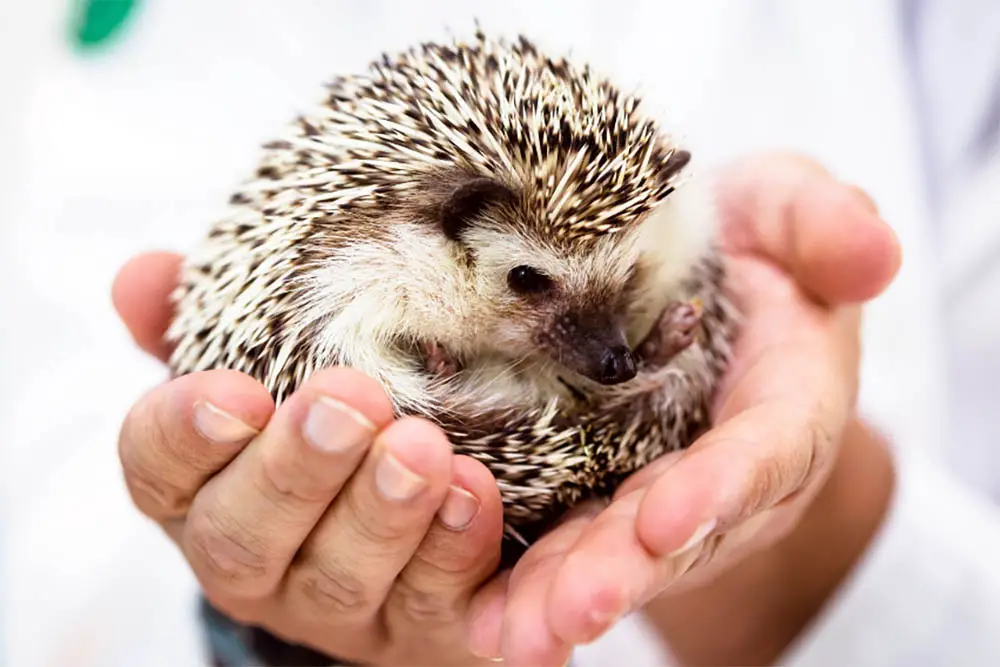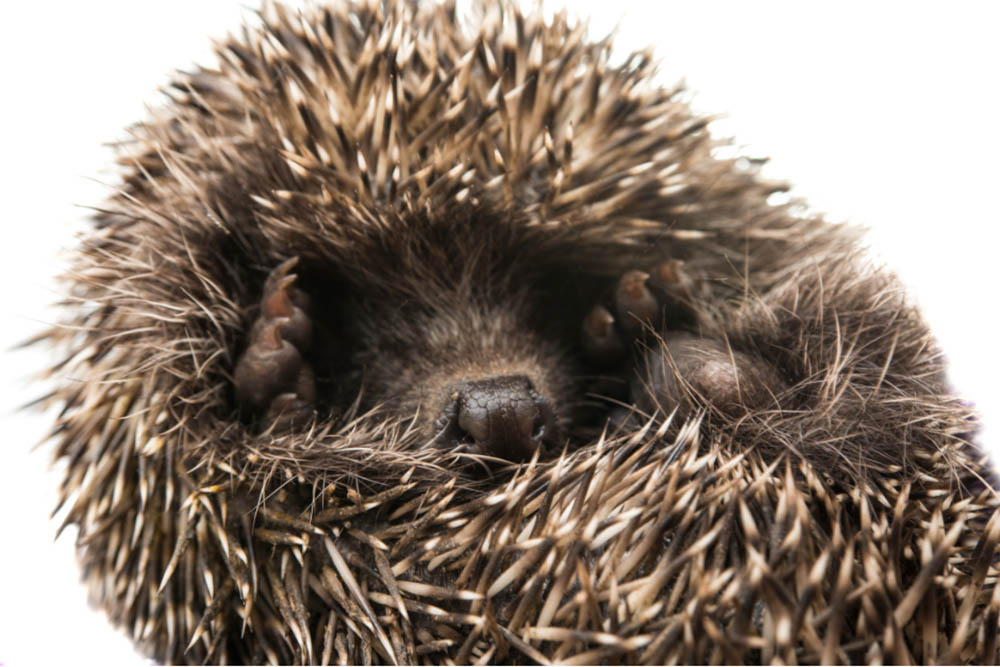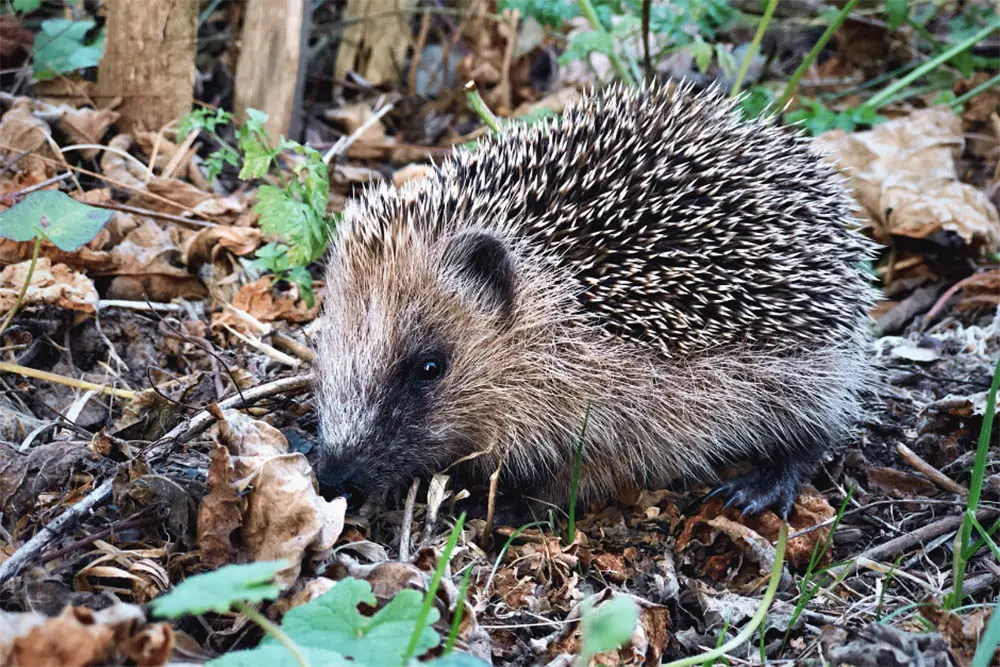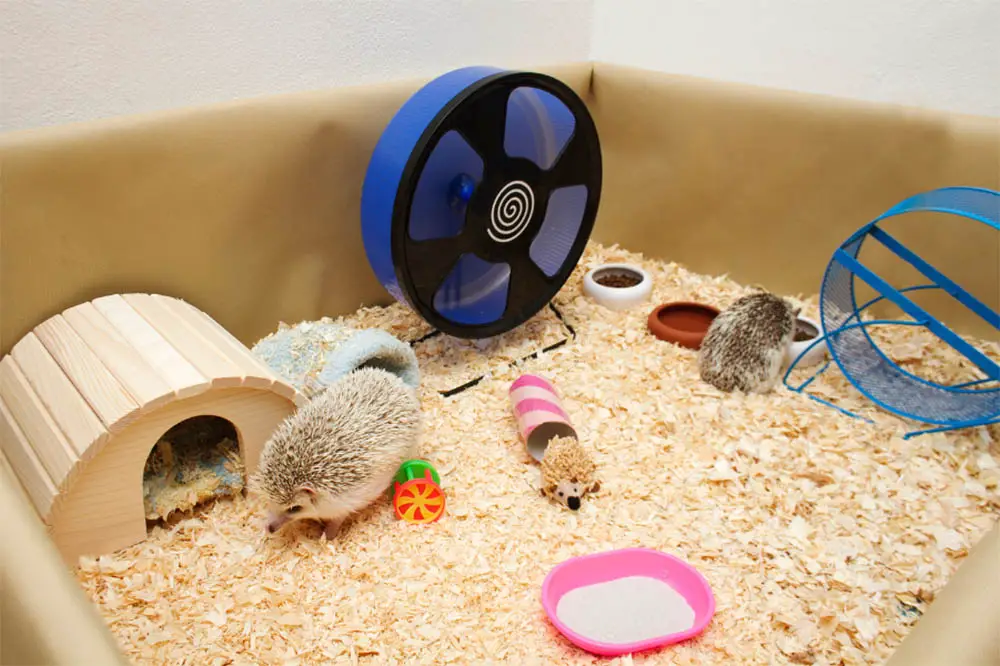When the cold months come, we think about curling up in a ball under our favorite blankets, pouring ourselves a cup of cocoa, or a glass or warming whiskey. We think about a roaring fireplace while we look out the window at the frost.
For hedgehogs and many other animals, they don’t get our cozy blankets, a cup of cocoa, or a toasty fireplace. Hedgehogs, along with many other animals, start to think about hibernation.
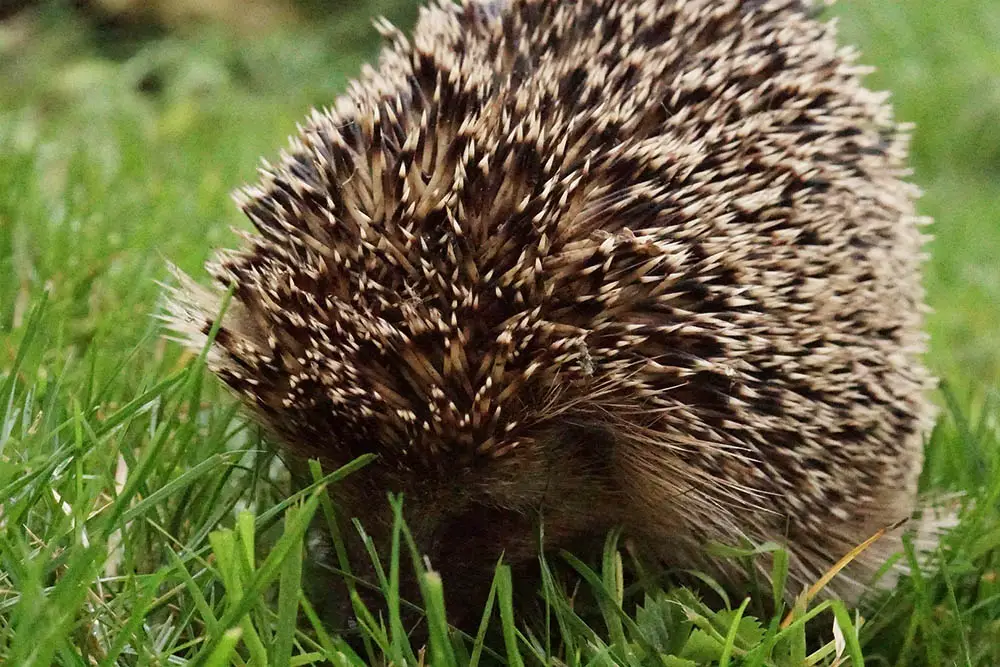
You will have seen cartoons, TV shows, films, and documentaries that show you what hibernation is all about. Squirrels collect nuts to hide away so that in the winter months they have plenty of food still available. Think back to that squirrel in the ‘Ice Age’ movies.
For hedgehogs hibernation is a little different, and for such a widespread animal around the world, these animals have a varied and interesting take on how they hibernate.
If you are wondering how hedgehogs hibernate, what hibernation really is, and if all these prickly little creatures hibernate in the winter, your answers are all here for you.
First of all, we want to introduce you to what hibernation actually is.
What exactly is hibernation?
A lot of animals will hibernate, even polar bears living in the ice caps hibernate. But, hedgehogs are one of the few mammals that are true hibernators. During hibernation these mammals are not really asleep.
They actually drop their body temperature to match their surroundings and enter a state of torpor.
Doing this allows them to retain a lot of energy that would be otherwise lost. However, it will also slow down all their bodily functions which will make normal activity impossible for them.
Where do hedgehogs like to hibernate?
Hedgehogs are not fussy creatures, when it comes to hibernation they are not very picky.
They will happily hibernate in a log pile, underneath a shed, in a compost heap, a man made hedgehog house, some may even hibernate underneath cars in some cases.
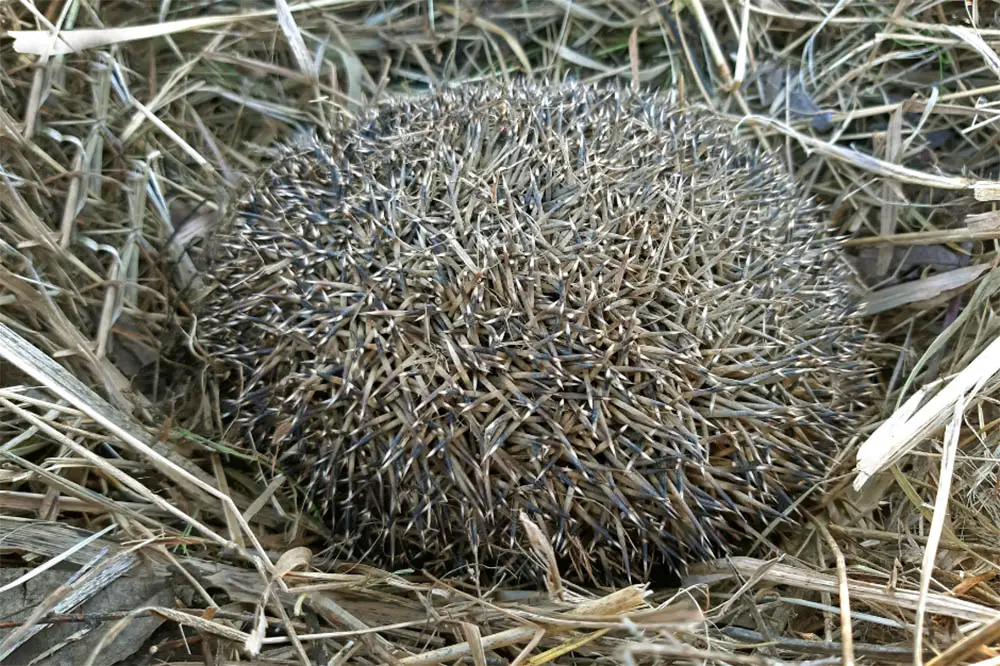
So those who live in countries where you may find hedgehogs need to be cautious, as you never know where you may find a hibernating hedgehog.
Any place that is covered, and out of direct elemental forces can serve as a safe place for a hedgehog to nest in the winter months.
Does hibernation mean sleep for hedgehogs?
Some animals that hibernate do not hibernate for the whole of the winter, some hibernate but only for short periods, and some may hibernate but not be as ‘under’ as others.
Hedgehogs are relatively inactive over the course of the winter, especially during times when temperature drops are very low.
However, on the milder days it is possible that a hedgehog will wake up early, grab a quick bite to eat and then return to hibernation, a bit like how we might wake up for a midnight snack.
Some research shows that during the period of hibernation, hedgehogs may move between nests every few weeks, and they may even use nests made by other hedgehogs. It’s a bit like couch-surfing for all hedgehogs, as long as it is warm enough and safe enough, they really do not mind.
However, if you go to a hedgehog country during the winter hoping to see a hedgehog, it is very unlikely that you will, even if you are extra vigilant and plan your trip very carefully.
Is hibernation always necessary?
Hedgehogs exist all around the world, there are many places worldwide where you may find hedgehogs, and for some of these hedgehogs the climates are warm enough that they do not need to hibernate.
Hedgehogs in the warmer climates appear to manage quite well without any need to hibernate. For example, there are descendants of the European hedgehogs that have acclimatized in New Zealand, these only seem to hibernate for very short periods of time in July and August.
In the United Kingdom, a lot of hedgehogs will hibernate, however if there is enough food available and if the temperatures are not too low, hedgehogs will not need to hibernate.
This especially applies to hedgehogs which may be kept indoors in winter, such as young ones that are found in autumn, which may weigh less than a pound in weight, which would be vulnerable to problems during and after hibernation.
In some places you can keep hedgehogs as pets, and in these places, if indoors, the hedgehog may not feel the need to hibernate due to a reliable food supply and the warmth of being indoors.
Do all hedgehogs hibernate?
Not all hedgehogs will hibernate. If a hedgehog has a partially good source of food then they do not need to preserve energy to survive the winter. Some people in hedgehog-having countries will get hedgehog foods and put it out for the local hedgehogs throughout the year.
These hedgehogs may not need to hibernate, as they will have a constant and reliable food source on top of their wild diet.

Even without this, some hedgehogs may have better circumstances than others, they may live in areas that have more of the food they eat such as slugs, snails, and other garden pests.
A hedgehog with a better source of food will not need to hibernate, or not as much as one that has a more scarce food source. No two hedgehogs will have the exact same situation.
Some hedgehogs will not hibernate at all, some may only hibernate for a couple of weeks, and some may hibernate for a couple of months. Not only does this depend on their food source, but it also depends on the temperature.
Sudden drops in temperature may cause even the most well-fed hedgehog to hibernate, whereas a sudden rise in temperature may ruse hibernating hedgehogs.
Is hibernation dangerous for hedgehogs?
If a hedgehog does need to hibernate through the winter it can be dangerous for them. Hedgehogs and other hibernators are immobile during their hibernation, this means that they are very vulnerable to the climate and to disturbances. This is why they need protective hibernacula.
Hedgehogs are also at a potential risk if the air temperature falls down too low, if it falls below freezing point, then there is the potential for ice crystals to form in their blood.
In the case that this happens and the temperature gets too low, the bodily functions of the hedgehog must switch on again and this will likely rouse the animal into activity.
In vastly urban areas around the world, this is when you might see hedgehogs entering areas close to homes, cars, and so on, in order to acquire more warmth.
Urban areas are also typically warmer than rural areas thanks to the denseness of the buildings, and heat that is omitted from man made appliances.
Hedgehogs that hibernate in more urban, built-up areas have a better chance of making it through freezing winters in comparison to hedgehogs who live in rural areas
Is this hedgehog dead or hibernating?
With most animals you can tell if they are dead or alive by simply checking for signs of breathing and movement.
However, it is not quite as simple when it comes to hedgehogs, as they are in a state of torpor, where the hedgehog greatly slows down most of their biological processes to conserve their energy, this means that even though it is breathing, you may not be able to see it, even if you look really, really closely.
A hibernating hedgehog will take very occasional, shallow breaths, their heart rate will also slow to as little as only 2 beats per minute, and their body temperature will drop to around 5 to 10 degrees Celsius!
Chilly! This means that you won’t be able to see it breathing, it will feel cold and even if you did for some reason have a stethoscope with you, it is unlikely you would hear their heartbeat.
You may worry it is dead, and you don’t want a dead animal in your backyard, however, you should never move a hibernating hedgehog. A key way to tell if a hedgehog is dead or hibernating is if they are curled up in a ball.
Hedgehogs will hibernate curled up in a ball, it is very unlikely that they will die curled up in a ball.
No one wants to be woken from sleep, but one thing that can be done is if you are concerned that the hedgehog is dead, you can gently touch its spines, this will not wake the hedgehog, however, if it is alive then it will ripple or shudder, and it may even let out a little sound similar to snoring.
So the best way to tell if a hedgehog is dead or hibernating is to check if it is curled up in a ball, and if it ripples, shudders, or snores when you touch it.
Hibernating hedgehogs get in all matters of weird places, and it is best you do not move them, so this check can save you from waking them and can also save you from having a dead hedgehog in your yard.

